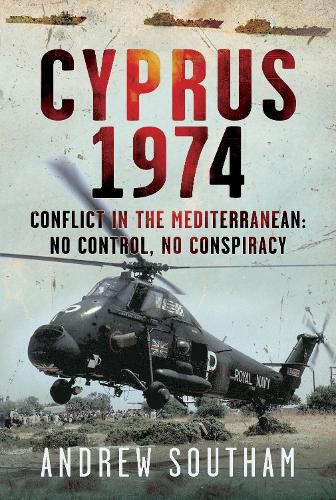Readings Newsletter
Become a Readings Member to make your shopping experience even easier.
Sign in or sign up for free!
You’re not far away from qualifying for FREE standard shipping within Australia
You’ve qualified for FREE standard shipping within Australia
The cart is loading…






On 15 July 1974, Archbishop Makarios III, the democratically elected president of Cyprus, narrowly escaped death when the Cyprus National Guard shelled the presidential palace in Nicosia. Makarios and his bodyguards fled just as the assault was delayed by a broken tank. The coup was backed by the Greek military dictatorship, or Junta, which had taken power in 1967 and saw Makarios as a communist sympathizer. The Junta's leader, Dimitrios Ioannidis, assumed that the CIA and the West would support the archbishop's removal, a major miscalculation. The coup's aftermath led to the installation of Nicos Sampson as president, sparking fears in Turkey of Cyprus uniting with Greece (Enosis), which threatened Turkey's security. In response, Turkey invaded Cyprus, sparking conflict with Greek and Cypriot National Guard forces. The crisis nearly led to war between Greece and Turkey. Efforts by Henry Kissinger and British Foreign Secretary James Callaghan to prevent further escalation were complicated by the political turmoil in the U.S. and Britain's vulnerability due to its military presence on the island. By August, the conflict resulted in 3,000 deaths and 200,000 displaced people. Cyprus remains divided today. In Cyprus 1974, Andrew Southam explores the perspectives of all parties involved, debunking conspiracy theories and highlighting key mistakes. AUTHOR: Having studied history at the universities of Leicester, Oxford and London (School of Advanced Studies), Andrew Southam is a freelance history journalist and writer with a thirty-year career covering everything from prehistoric Britain to political intrigues of the recent past. His work includes features, interviews, articles and profiles with credits such as the Times, British Forces Broadcasting Service, National World, Guardian US, Civil Service World, Parliament's The House magazine, History Today, Saga magazine, the Church Times, Military History Matters, US News, the Commentator, the Foreign Policy Centre, and the Heritage Foundation. Andrew is an associate fellow of the Royal Historical Society and a fellow of the Royal Geographical Society. 40 b/w illustrations
$9.00 standard shipping within Australia
FREE standard shipping within Australia for orders over $100.00
Express & International shipping calculated at checkout
On 15 July 1974, Archbishop Makarios III, the democratically elected president of Cyprus, narrowly escaped death when the Cyprus National Guard shelled the presidential palace in Nicosia. Makarios and his bodyguards fled just as the assault was delayed by a broken tank. The coup was backed by the Greek military dictatorship, or Junta, which had taken power in 1967 and saw Makarios as a communist sympathizer. The Junta's leader, Dimitrios Ioannidis, assumed that the CIA and the West would support the archbishop's removal, a major miscalculation. The coup's aftermath led to the installation of Nicos Sampson as president, sparking fears in Turkey of Cyprus uniting with Greece (Enosis), which threatened Turkey's security. In response, Turkey invaded Cyprus, sparking conflict with Greek and Cypriot National Guard forces. The crisis nearly led to war between Greece and Turkey. Efforts by Henry Kissinger and British Foreign Secretary James Callaghan to prevent further escalation were complicated by the political turmoil in the U.S. and Britain's vulnerability due to its military presence on the island. By August, the conflict resulted in 3,000 deaths and 200,000 displaced people. Cyprus remains divided today. In Cyprus 1974, Andrew Southam explores the perspectives of all parties involved, debunking conspiracy theories and highlighting key mistakes. AUTHOR: Having studied history at the universities of Leicester, Oxford and London (School of Advanced Studies), Andrew Southam is a freelance history journalist and writer with a thirty-year career covering everything from prehistoric Britain to political intrigues of the recent past. His work includes features, interviews, articles and profiles with credits such as the Times, British Forces Broadcasting Service, National World, Guardian US, Civil Service World, Parliament's The House magazine, History Today, Saga magazine, the Church Times, Military History Matters, US News, the Commentator, the Foreign Policy Centre, and the Heritage Foundation. Andrew is an associate fellow of the Royal Historical Society and a fellow of the Royal Geographical Society. 40 b/w illustrations